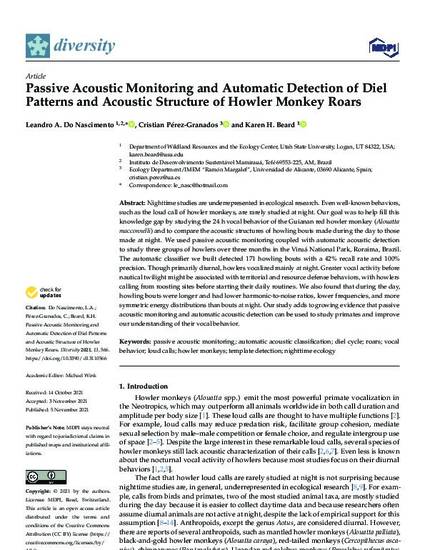
Nighttime studies are underrepresented in ecological research. Even well-known behaviors, such as the loud call of howler monkeys, are rarely studied at night. Our goal was to help fill this knowledge gap by studying the 24 h vocal behavior of the Guianan red howler monkey (Alouatta macconnelli) and to compare the acoustic structures of howling bouts made during the day to those made at night. We used passive acoustic monitoring coupled with automatic acoustic detection to study three groups of howlers over three months in the Viruá National Park, Roraima, Brazil. The automatic classifier we built detected 171 howling bouts with a 42% recall rate and 100% precision. Though primarily diurnal, howlers vocalized mainly at night. Greater vocal activity before nautical twilight might be associated with territorial and resource defense behaviors, with howlers calling from roosting sites before starting their daily routines. We also found that during the day, howling bouts were longer and had lower harmonic-to-noise ratios, lower frequencies, and more symmetric energy distributions than bouts at night. Our study adds to growing evidence that passive acoustic monitoring and automatic acoustic detection can be used to study primates and improve our understanding of their vocal behavior.
Leandro A. Do Nascimento https://orcid.org/0000-0001-8254-2900
Cristian Pérez-Granados https://orcid.org/0000-0003-3247-4182
Karen H. Beard https://orcid.org/0000-0003-4997-2495
